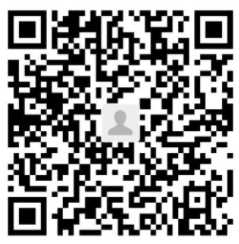作为Web开发人员,通常会从设计师那里拿到Sketch/XD/Figma设计稿。在设计稿中,对屏幕尺寸,字体,配色,布局,图片等等都进行了详细描述。有了这些信息后,首先需要在tailwind配置文件中定义这些基本样式,然后再使用这些样式分别实现不同的页面。
示例一:彻底覆盖tailwind默认样式
breakpoints
如果不使用Tailwind默认Breakpoints,则需要在tailwind.confg.js中进行定义。如果还要使用Tailwind中原来定义的breakpoints,则需要在extends下添加新屏幕尺寸,否则,可以彻底覆盖其screens的定义:
JavaScript
theme: {
screens: {
table: '960px',
desktop: '1248px',
},这样后续就可以使用类似:
markup
<h2 class="text-2xl table:text-4xl">定义配色
同样,这里覆盖默认Tailwind的配色:
JavaScript
theme: {
screens: {
table: '960px',
desktop: '1248px',
},
colors: {
white: '#FFFFFF',
purple: '#3F3CBB',
midnight: '#121063',
metal: '#565684',
'tahiti-blue': '#3AB7BF',
'cool-white': '#ECEBFF',
'bubble-gum': '#FF77E9',
'coppper-rust': '#78DCCA',
},这样后续就可以使用类似:
markup
<p class="text-purple">
<button class="border-purple">
<button class="border-metal/10"> boxShadows
同理,覆盖Tailwind中的默认设置:
JavaScript
boxShadow: {
sm: '0px 2px 4px 0px rgba(11, 10, 55, 0.15)',
lg: '0px 8px 20px 0px rgba(18, 16, 99, 0.06)',
},Typography
字体大小
更改tailwind.config.js
JavaScript
fontSize: {
xs: ['14px', {lineHeight: '24px', letterSpacing: '-0.03em'}],
sm: ['16px', {lineHeight: '28px', letterSpacing: '-0.03em'}],
lg: ['18px', {lineHeight: '28px', letterSpacing: '-0.03em'}],
xl: ['24px', {lineHeight: '36px', letterSpacing: '-0.03em'}],
'2xl': ['36px', {lineHeight: '48px', letterSpacing: '-0.032em'}],
'3xl': ['48px', {lineHeight: '56px', letterSpacing: '-0.032em'}],
'4xl': ['56px', {lineHeight: '64px', letterSpacing: '-0.032em'}],
'5xl': ['80px', {lineHeight: '80px', letterSpacing: '-0.032em'}],
},更新styles.css
如果使用Google字体的话:
css
@import url('https://fonts.googleapis.com/css2?family=Roboto:ital,wght@0,100;0,300;0,400;0,500;0,700;0,900;1,100;1,300;1,400;1,500;1,700;1,900&display=swap');
@tailwind base;
@tailwind components;
@tailwind utilities;如果使用本地字体的话:
css
@tailwind base;
@tailwind components;
@tailwind utilities;
@layer base {
@font-face {
font-family: 'Satoshi',
src: url('../fonts/Satoshi-Black.woff2') format('woff2'),
url('../fonts/Satoshi-Black.woff') format('woff');
}
@font-face {
font-family: 'Inter';
font-style: normal;
font-weight: 400;
font-display: swap;
src: url('../fonts/Inter-Regular.woff2?v=3.19') format('woff2'),
url('../fonts/Inter-Regular.woff?v=3.19') format('woff');
}
}同时更新tailwind.config.css:
JavaScript
fontFamily: {
satoshi: 'Satoshi, sans-serif',
inter: 'Inter, sans-serif',
}如果整个网站的默认字体都是inter的话,可以在body元素上声明:
markup
<body class="font-inter">更改为Satoshi字体:
markup
<p class="font-satoshi">示例二:扩展tailwind默认样式
在tailwind.config.css中增加额外样式
颜色
可以从Figma设计稿中获取各种颜色的定义。
JavaScript
theme: {
extend: {
colors: {
'body': '#17171F',
'nav': '#382452',
'input': '#2A3B44',
'input-border': '#666677',
'selected-text': '#B2B3FF'
}
}
}字体
JavaScript
fontFamily: {
'poppins': ["'Poppins'", 'sans-serif']
}然后去Google Fonts中选择对应的字体,比如poppins Regular 400 + Semibold 600 + bold 700。将对应的html代码复制到index.html:
markup
<html>
<head>
<link rel="preconnect" href="https://fonts.googleapis.com">
<link rel="preconnect" href="https://fonts.gstatic.com" crossorigin>
<link href="https://fonts.googleapis.com/css2?family=Poppins:wght@400;600;700&display=swap" rel="stylesheet">基本body样式
markup
<body class="bg-body text-white font-poppins">其中的bg-body源自于自定义样式:
css
'body': '#17171F',而text-white源自于tailwind默认样式。
font-poppins源于自定义字体。
实现navbar
markup
<header class="py-6">
<div
class="container flex justify-between items-center mx-auto px-8 md:px-14 lg:px-24 w-full"
>
<div class="text-lg font-bold">逻思编程</div>
<div class="hidden md:flex space-x-12 items-center">
<a href="#" class="text-selected-text">首页</a>
<a href="#courses">课程</a>
<a href="#tutorials">教程</a>
<a href="#contact">
<button class="px-6 py-2 bg-theme font-bold">联系我</button>
</a>
</div>
<div class="md:hidden">
<svg width="26" height="18" viewBox="0 0 26 18" fill="none" xmlns="http://www.w3.org/2000/svg"><path d="M13 17.5H0.25V14.6667H13V17.5ZM25.75 10.4167H0.25V7.58333H25.75V10.4167ZM25.75 3.33333H13V0.5H25.75V3.33333Z" fill="white"/></svg>
</div>
</div>
</header>关于container对应的类:
- flex:布局方式
- justify-between:保证logo在左边,nav在右边
- items-center mx-auto:保证LOGO/NAV内容居中
- px-8 md:px-14 lg:px-24: 在不同尺寸屏幕提供不同的左边空白区
关于Navbar:
- hidden md:flex: 默认尺寸下,隐藏navbar,medium大小屏幕时,以flex方式显示
- space-x-12 items-center:设定子元素间距,居中
- 联系我按钮样式px-6 py-2 bg-theme font-bold rounded:设定x/y轴空白,背景色,字体,圆角等
- svg样式md:hidden: 默认情况下显示,但当屏幕尺寸大于medium时,隐藏
根据屏幕尺寸灵活的在横向/纵向布局
效果
手机屏幕下:

大屏幕下:

实现
首先需要做的就是对父容器的定义。
- 在默认情况下(小屏幕),使用flex布局且纵向布局。同时,在图文混排的时候,在小屏幕时先显示后面的图片子元素(flex-col-reverse)。
- 在大屏幕下,使用flex横向布局,这样子元素就会横向布局,同时先显示文字,再显示子元素。
markup
<div class="container flex flex-col-reverse lg:flex-row items-center gap-12 mt-14 lg:mt-28">由于两个子元素均分屏幕空间,因此需要同时添加flex-1类。
如果要在大屏幕下的图片后面实现一个圆角阴影效果的话:
css
<div class="
hidden
md:block
overflow-hidden
bg-slate-300
rounded-l-full
absolute
h-80
w-2/4
lg:-bottom-32
lg:-right-40"
></div>其中,
- hidden / md:block: 默认隐藏,md时为block
- overflow-hidden:重叠部分隐藏
- absolute: 使得图片脱离文档流,进而不受其他兄弟子元素的影响
- lg:-bottom-32 / lg:-right-40: 将图片向右下方偏移,呈现层次效果。



